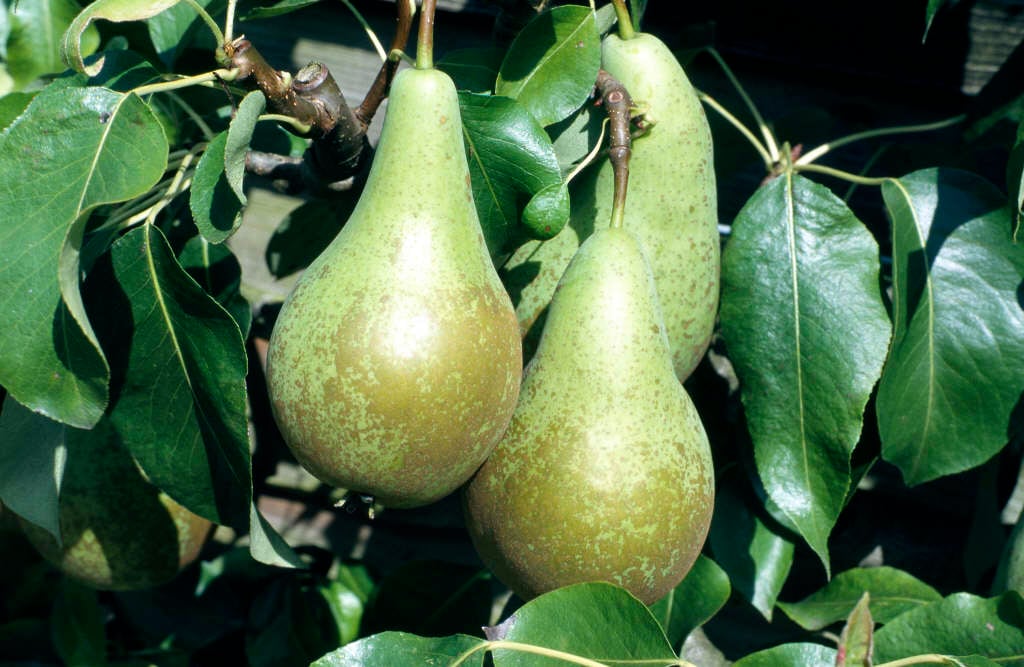Size
Ultimate height
4–8 metresTime to ultimate height
5–10 yearsUltimate spread
4–8 metresGrowing conditions
Moisture
Moist but well–drained, Well–drainedpH
NeutralColour & scent
| Stem | Flower | Foliage | Fruit | |
| Spring | White | Green | ||
|---|---|---|---|---|
| Summer | Green | |||
| Autumn | Green | |||
| Winter |
Position
- Full sun
Aspect
South–facing or West–facing
Exposure
Sheltered Hardiness
H6Botanical details
- Family
- Rosaceae
- Native to GB / Ireland
- No
- Foliage
- Deciduous
- Habit
- Bushy
- Genus
Pyrus are deciduous trees or shrubs with oval leaves and scented white flowers in spring, followed by green or brown fruits, edible in some species
- Name status
Accepted
How to grow
Cultivation
Suitable for all training forms. Flowers early and so at risk from spring frosts. Can set fruit without pollination, but tends to fruit better if cross pollinated by another cultivar. Keep a weed free area of 60cm radius around the trunk. Fruit thinning may be needed
Propagation
Propagate by grafting or chip budding onto a clonal rootstock for fruit; quince rootstocks are usually used. The rootstock used largely determine the size
Suggested planting locations and garden types
- Cottage and informal garden
- City and courtyard gardens
- Wildlife gardens
- Edible fruit
- Wall side borders
Pruning
Regular pruning required; a spur bearer
Pests
May be susceptible to aphids, caterpillars, codling moth, pear blister mite, pear midge and pear and cherry slugworm
Diseases
May be susceptible to blossom wilt, brown rot, fireblight, pear scab, European pear rust and honey fungus (rarely)
Get involved
The Royal Horticultural Society is the UK’s leading gardening charity. We aim to enrich everyone’s life through plants, and make the UK a greener and more beautiful place.
